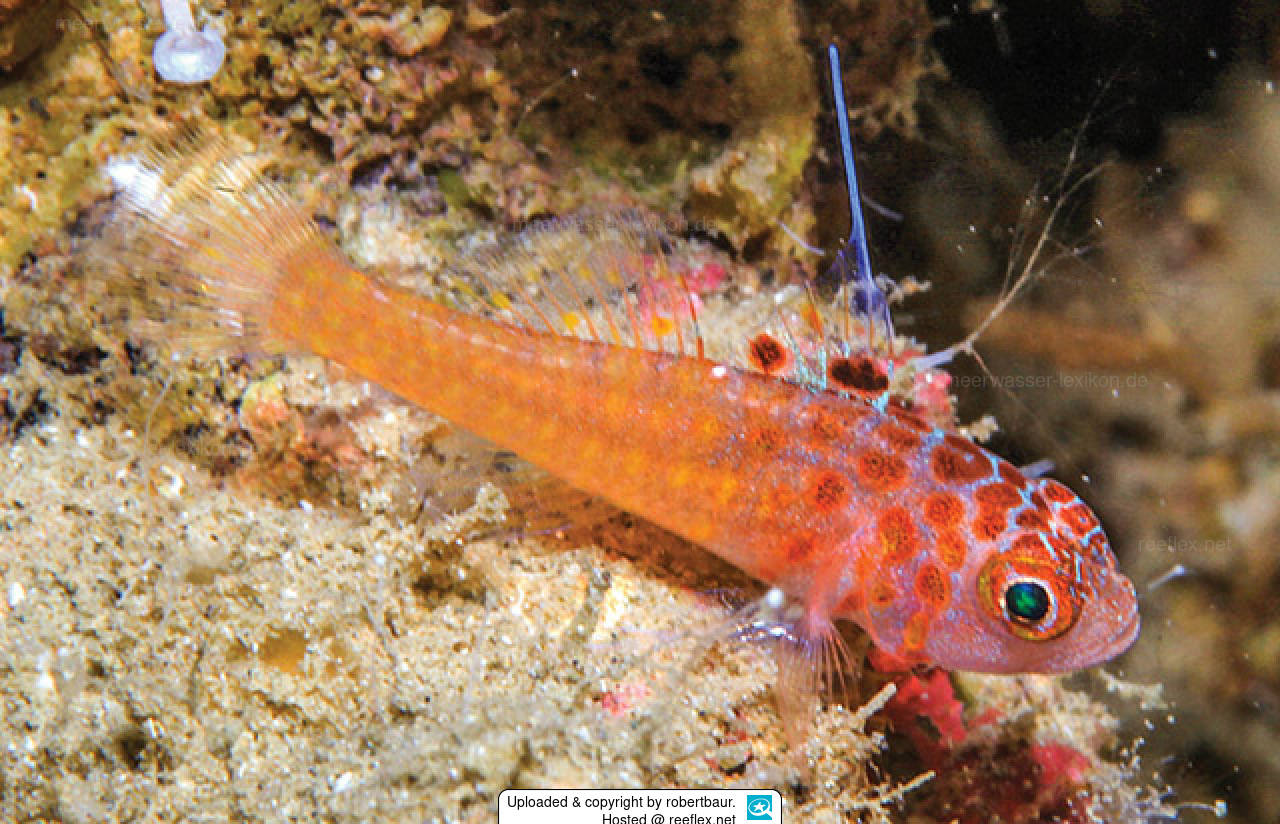Info
Trimma irinae Winterbottom, 2014
Trimma irinae, (Pisces; Gobioidei) a new species of gobiid fish from Milne Bay Province, Papua New Guinea
RICHARD WINTERBOTTOM
Abstract
A new species of Trimma, T. irinae, is described from 65 m off Lawadi, Milne Bay Province, Papua New Guinea.
This colourful new species has red-orange spots on the head and anterior trunk, with a yellow to orange body posteriorly. The first dorsal fin has two dark basal spots, and the elongated section of the second dorsal spine is bright white to pale blue in life.
There are 8–9 scales in the predorsal midline, usually cycloid scales present along the upper border of the opercle in up to three horizontal rows, no cheek scales, and the middle 9–11 rays of the pectoral fin are branched. The fifth pelvic fin ray branches once dichotomously and is 52–64% the length of the fourth ray, and the basal membrane connecting the inner margins of the fifth pelvic fins rays is less than 15% the length of the fifth ray.
Systematik: Biota > Animalia (Kingdom) > Chordata (Phylum) > Vertebrata (Subphylum) > Gnathostomata (Superclass) > Pisces (Superclass) > Actinopterygii (Class) > Perciformes (Order) > Gobiidae (Family) > Gobiinae (Subfamily) > Trimma (Genus)
Jumping guard
A jumping guard prevents (nocturnal) fish from jumping out.
Wrasses, blennies, hawkfishs and gobies jump out of an unprotected tank in fright if their night rest is disturbed, unfortunately these jumpers are found dried up in the morning on carpets, glass edges or later behind the tank.
https://www.korallenriff.de/en/article/1925_5_Jump_Protection_Solutions_for_Fish_in_the_Aquarium__5_Net_Covers.html
A small night light also helps, as it provides the fish with a means of orientation in the dark!
Trimma irinae, (Pisces; Gobioidei) a new species of gobiid fish from Milne Bay Province, Papua New Guinea
RICHARD WINTERBOTTOM
Abstract
A new species of Trimma, T. irinae, is described from 65 m off Lawadi, Milne Bay Province, Papua New Guinea.
This colourful new species has red-orange spots on the head and anterior trunk, with a yellow to orange body posteriorly. The first dorsal fin has two dark basal spots, and the elongated section of the second dorsal spine is bright white to pale blue in life.
There are 8–9 scales in the predorsal midline, usually cycloid scales present along the upper border of the opercle in up to three horizontal rows, no cheek scales, and the middle 9–11 rays of the pectoral fin are branched. The fifth pelvic fin ray branches once dichotomously and is 52–64% the length of the fourth ray, and the basal membrane connecting the inner margins of the fifth pelvic fins rays is less than 15% the length of the fifth ray.
Systematik: Biota > Animalia (Kingdom) > Chordata (Phylum) > Vertebrata (Subphylum) > Gnathostomata (Superclass) > Pisces (Superclass) > Actinopterygii (Class) > Perciformes (Order) > Gobiidae (Family) > Gobiinae (Subfamily) > Trimma (Genus)
Jumping guard
A jumping guard prevents (nocturnal) fish from jumping out.
Wrasses, blennies, hawkfishs and gobies jump out of an unprotected tank in fright if their night rest is disturbed, unfortunately these jumpers are found dried up in the morning on carpets, glass edges or later behind the tank.
https://www.korallenriff.de/en/article/1925_5_Jump_Protection_Solutions_for_Fish_in_the_Aquarium__5_Net_Covers.html
A small night light also helps, as it provides the fish with a means of orientation in the dark!







 robertbaur
robertbaur










































































































